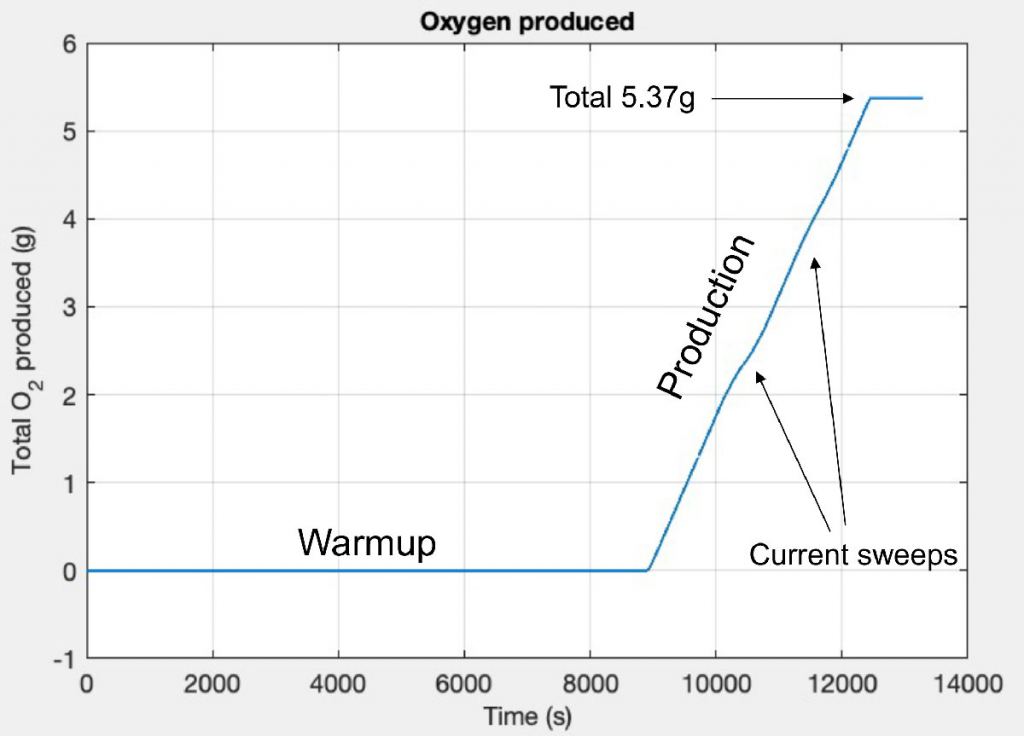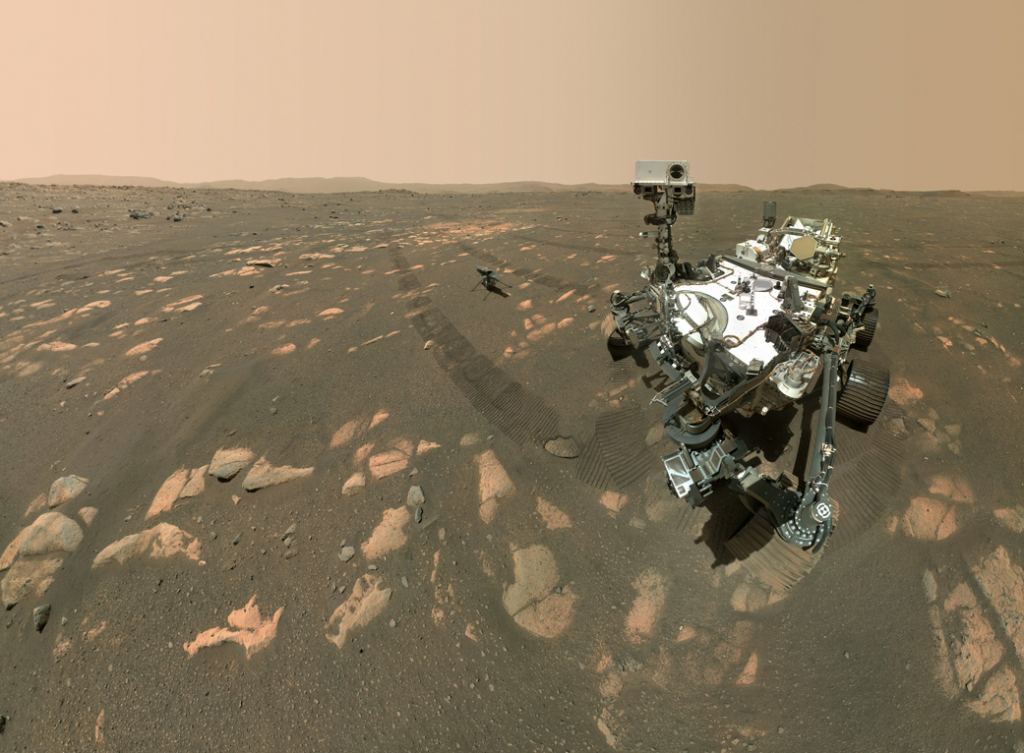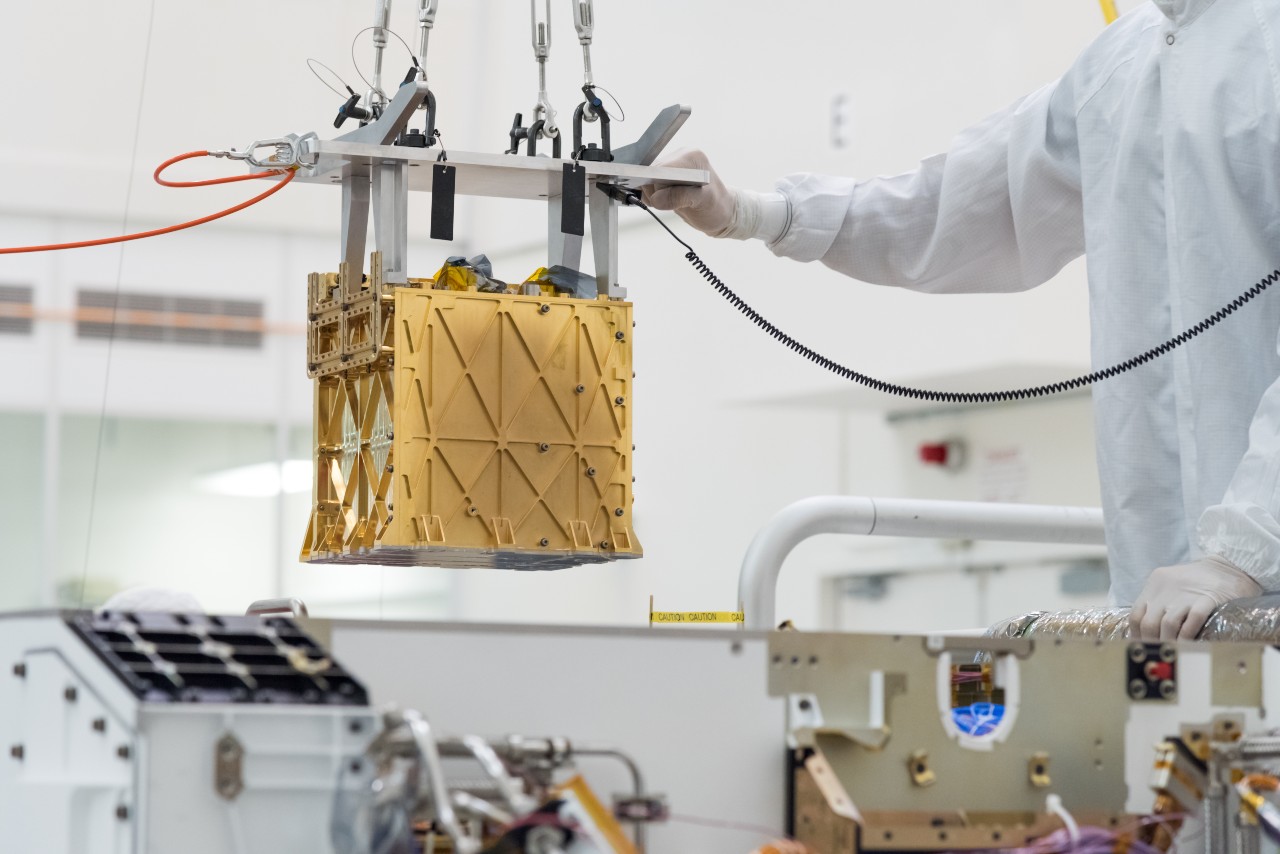Humanity achieved an incredible series of new milestones on Mars this week. It began on Monday April 19th, when the Ingenuity helicopter demonstrated the first-ever powered, controlled flight on another world. And now, for the first time, the Perseverance rover has used ingredients from the Martian atmosphere to create breathable oxygen, in a test that might pave the way for future astronauts to ‘live off the land’ on the Red Planet.
The feat was achieved by the Mars Oxygen In-Situ Resource Utilization Experiment (MOXIE), a gold-colored cube bolted to the rover’s belly. Over the course of an hour on April 20th, MOXIE produced 5.4 grams of oxygen, enough to keep an astronaut breathing for about ten minutes.

MOXIE works by sucking in carbon dioxide (which makes up about 96% of Mars’ thin atmosphere) while filtering out unwanted particles. The compressed carbon dioxide is then heated, breaking the molecules into oxygen and carbon monoxide. Further heating is required to separate the two new gasses, releasing the unwanted carbon monoxide back into the atmosphere, and leaving behind the breathable oxygen. MOXIE’s gold plated exterior is designed to protect the other instruments on the rover from the process’s extreme heat, which reaches over 800 degrees Celsius/1470 Fahrenheit.
Like Ingenuity, MOXIE is a technology demonstration: neither has any impact on Perseverance’s primary science goals. Instead, they are meant to provide proofs of concept for future missions. Future Ingenuity-like drones might be able to explore places a rover can’t go, like a cliff edge or a fissure, for example. Similarly, future missions could use MOXIE-like technology to enable long-term exploration.
Creating a breathable atmosphere for humans isn’t the only application. It could also be used to refuel a rocket for its return journey home. As MOXIE’s principal investigator Michael Hecht explains, “To get four astronauts off the Martian surface on a future mission would require 15,000 pounds (7 metric tons) of rocket fuel and 55,000 pounds (25 metric tons) of oxygen…The astronauts who spend a year on the surface will maybe use one metric ton between them to breathe.” In other words, most of the oxygen created by future MOXIE-like gadgets won’t be for life-support, but rather for propulsion.

Future tests will push the limits of MOXIE’s capabilities. It should be able to double its output to 12 grams of oxygen per hour, and over the next two years it will be tested at least nine more times in different conditions (different seasons and times of day). The team is also currently analyzing the purity of the oxygen produced: preliminary results show near-perfect success.
In the meantime, Ingenuity has about a week and a half left in its test period, in which it will make progressively more complicated flights. When it’s done, Perseverance will rove away on its own mission – bringing MOXIE with it – to collect samples of Martian soil and rock. The samples will be picked up by a future sample-return mission, bringing them home to Earth for a close-up examination.
Learn More:
- “NASA’s Perseverance Mars Rover Extracts First Oxygen from Red Planet.” NASA.
- Nancy Kotary and Sara Cody, “Aboard NASA’s Perseverance rover, MOXIE creates oxygen on Mars.” MIT.
Featured Image: MOXIE being lowered into the belly of the Perseverance rover. Credit: NASA/JPL.

